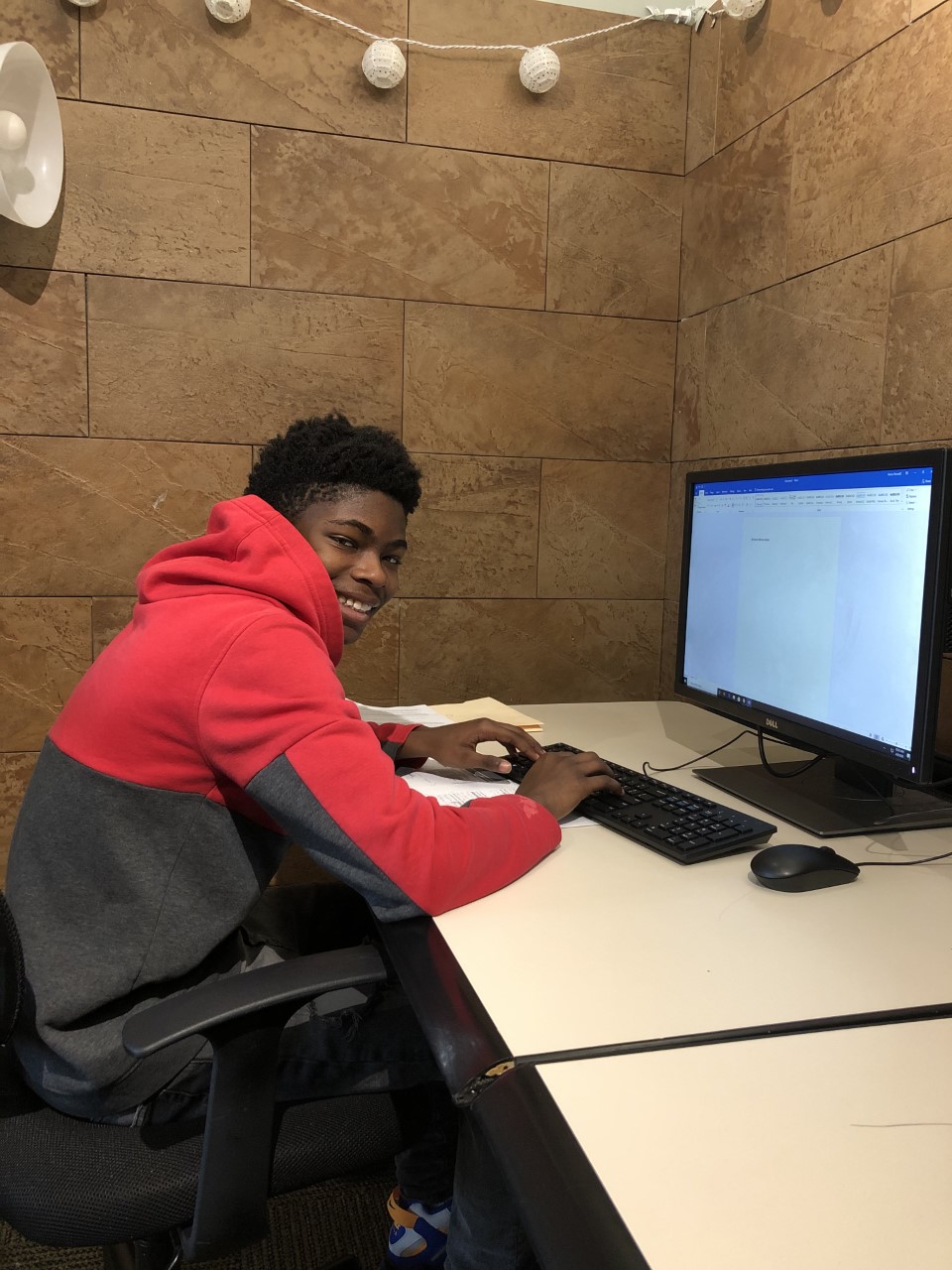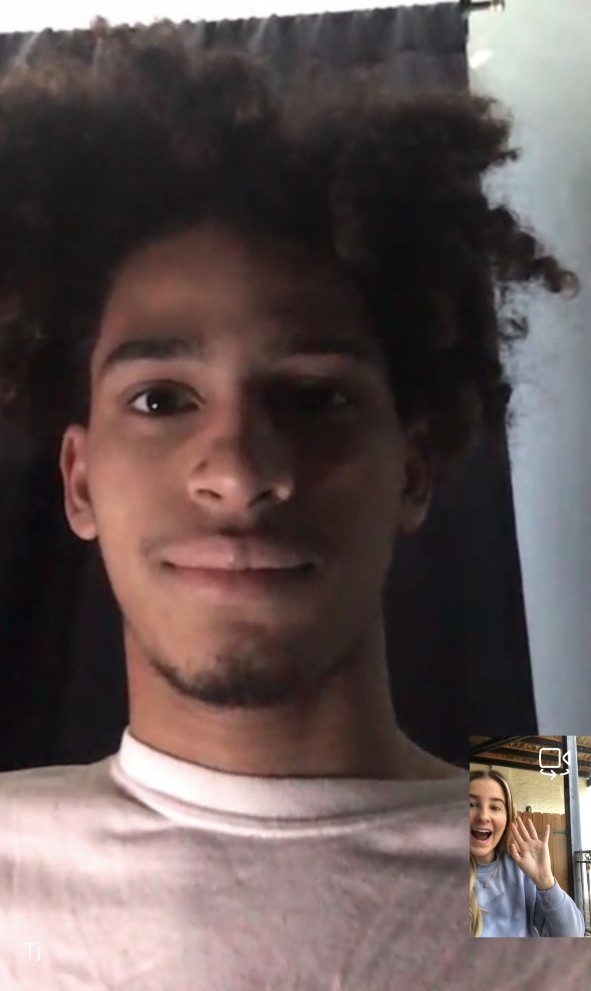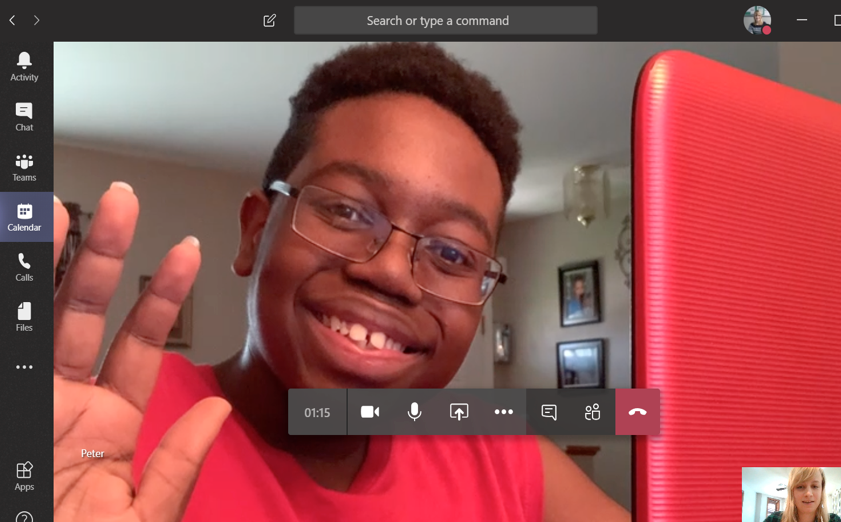Youth Help Build Homes for Chicago Residents in Need
At Mercy Home, we stress the importance of giving back to the community. Some of our young men spent a...
June 26, 2025
April 9, 2020
Antonio, a high school junior currently living at Mercy Home for Boys & Girls, continues to go about his morning routine like any weekday. He wakes up, has breakfast, and prepares for school. But these days, he doesn’t get on a bus or sit in a classroom surrounded by students. Instead, from the comfort of Mercy Home, he turns on his laptop, checks his email, and opens up an online chat platform that connects him to his teachers and classmates.
With schools around the world closed to help stop the spread of the coronavirus, Antonio, like many other students at Mercy Home, is attending school online by way of virtual classrooms and elearning curriculums.
“There’s an attendance we do everyday at 10 a.m. We check in and my teachers give me daily assignments from each class,” Antonio said. “Online school has been going well for me. The school gave me a laptop, which has all the programs I need.”

Antonio likes communicating with his teachers via email and chat programs. He says this system is helping him stay on task. “I’ve been keeping up on my work, and teachers have done a good job of making sure I turn in work on time,” he said. “They’re always able to message me.”
As classrooms shift from a physical setting into the virtual world, such a dramatic shift posses many challenges for vulnerable kids at Mercy Home, who are typically two to three grade levels behind in reading and math. School closures have upended normal educational resources, threatening to further widen this achievement gap, especially for kids who struggle in traditional classroom settings.
Mercy Home’s Education and Career Resources team, however, sprang into action to bridge this gap. As school closures became a reality, coworkers designed a comprehensive plan of extra educational support for our kids so that they don’t fall behind academically.
“The biggest thing we’re trying to accomplish and maintain is our structure of support, so that the youth know they’re still being supported by our team members and by their schools,” said Liz Kuhn Tomka, Vice President of Education and Career Resources. “We are serving as a conduit for that communication and information.”
Educational coordinators, who have been assigned to each student at Mercy Home, play a critical role in facilitating this network of support. Using video conferencing platforms, email, and phone conversations, coordinators are assisting youth with virtual class assignments, tutoring, and check-ins with teachers about work completion and any needed materials.
“It feels good that the coordinators are giving me support,” said Antonio. “They help me stay organized and focused on what I have to do. Even if we’re out of school, I still have to make it through the year.”
That kind of support, Antonio says, is helping him stay positive throughout this crisis.
“Everything will be OK, as long as I keep doing what I’m supposed to,” he said. “Mercy Home’s support helps me do that.”
Coordinators play an even more important role for the 55 percent of Mercy Home kids who receive special education services. These youth are at the greatest risk for disengagement during this time. Accountability, flexibility, individual treatment, family engagement, and frequent teacher consultation is a must for a smooth transition to virtual learning.
Therefore, coordinators are stepping up by providing individual educational resources for these youth, altering their materials to meet needs, and attending virtual meetings with school administrators who provide special education services.
“There’s still a lot of advocacy work that we’re doing,” said Tomka. “Part of that is making sure that youth needs are being met, like do they have access to technology? Do they have the resources they need to do their remote learning or e-learning?”
Mercy Home quickly assessed those needs and, thanks to our generous donors, provided laptops and wi-fi service to students who don’t have a personal computer or access to a reliable internet connection.
This support is especially important for some kids like TJ who temporarily transitioned to a relative or friend’s home.

“Virtual meetings with my coordinator have helped me stay on track with my school work even though I am at home,” said TJ. “I still get to receive the resources I need to succeed in school by having Mercy Home in constant communication with my teachers, my family and me.”
Peter, a sophomore in high school, added: “I like that I’m able to communicate with Mercy Home staff so that we’re able to review how everything is going and so that we’re able to have a quick check-in. And then I like that e-learning is paced for me so that I’m able to do what I have to do on my time and can focus more.”

As the mechanics of Mercy Home’s academic strategy are set in motion during this new era of virtual learning, Tomka does not loose sight of the big picture.
“Yes the learning is important, but more than anything, we’re making sure that the youth feel safe and that their mental health needs are being met because that is going to be the foundation for learning,” she said.
For upbeat kids like Antonio who are taking this crisis in stride by staying positive, this foundation is already in place, thanks to our generous donors who make it all possible.
“I’m very thankful for the donor’s support,” said Antonio. “If I didn’t have a place to go right now, I’d be lost in the streets. I’m glad I have a place to stay and a place to come back to.”
At Mercy Home, we stress the importance of giving back to the community. Some of our young men spent a...
June 26, 2025
In the city of “Big Shoulders,” there are many young people who don’t have a positive role model or a...
June 26, 2025
When eight of Mercy Home’s young people, accompanied by four coworkers, embarked on a 10-day journey to County Cork, Ireland,...
June 26, 2025
Comments